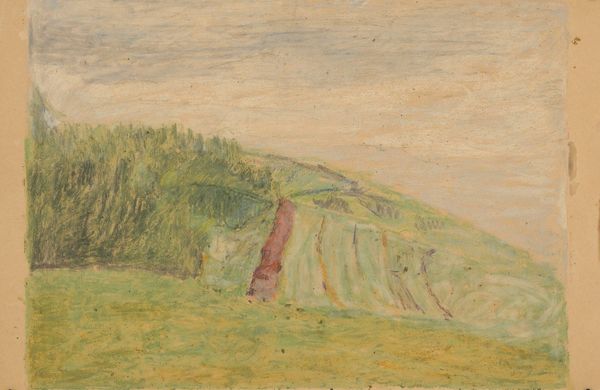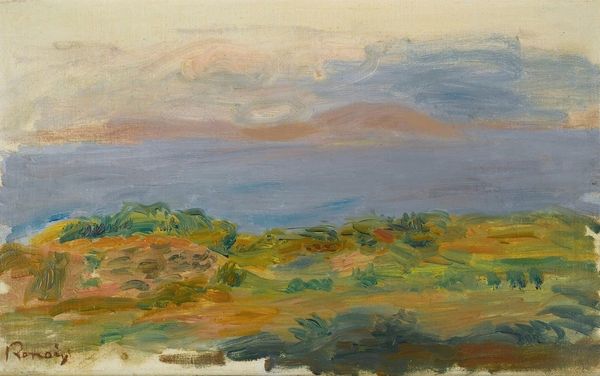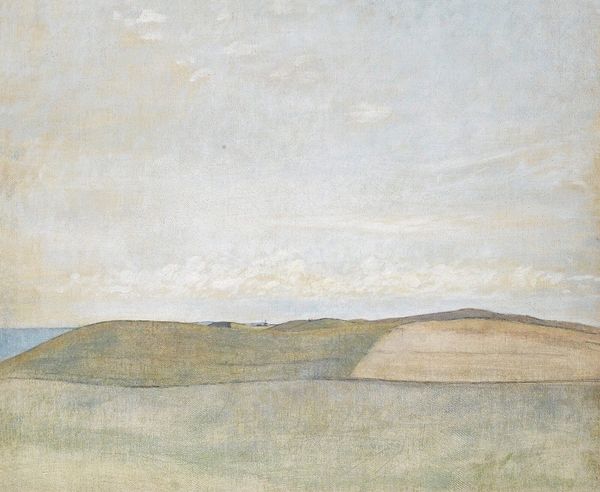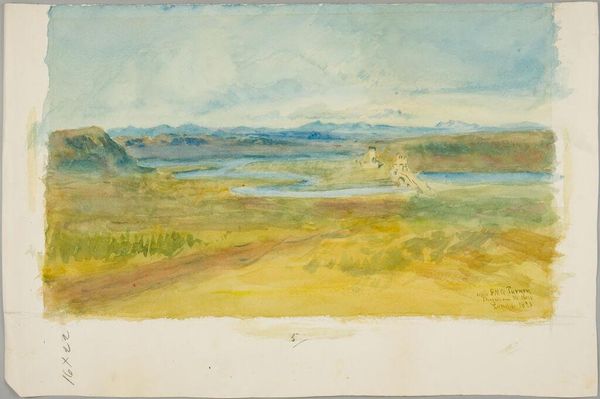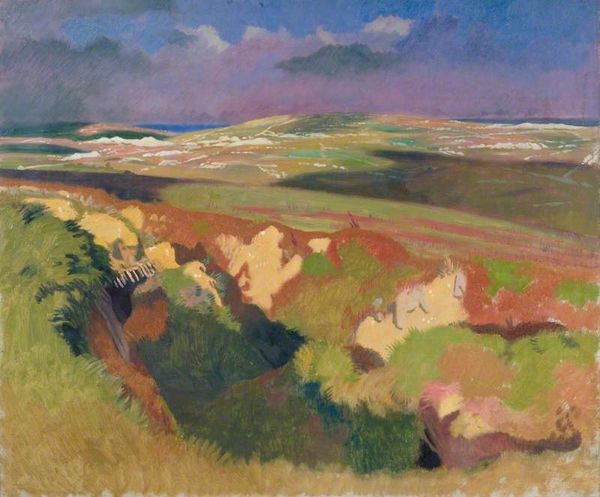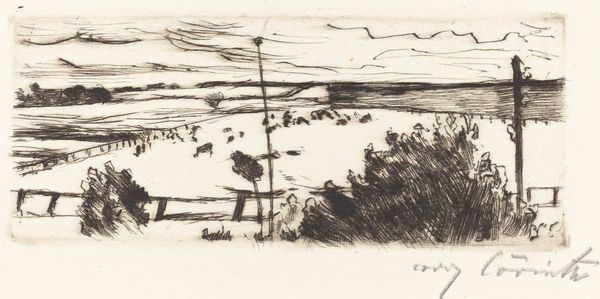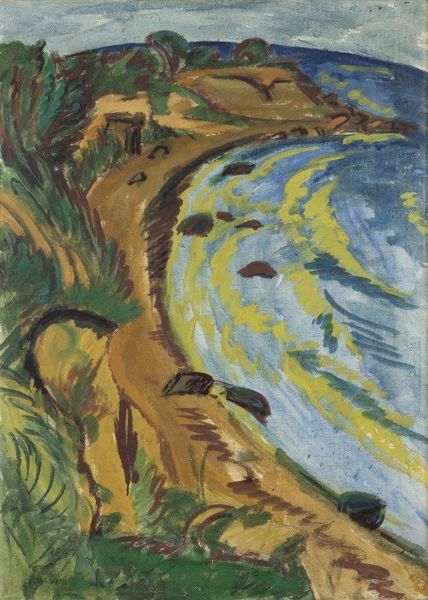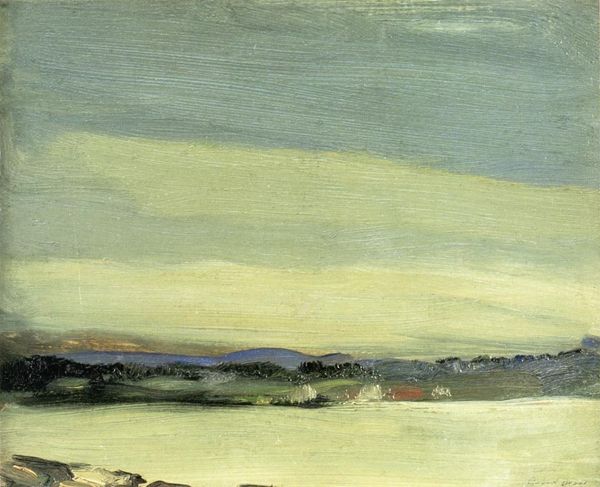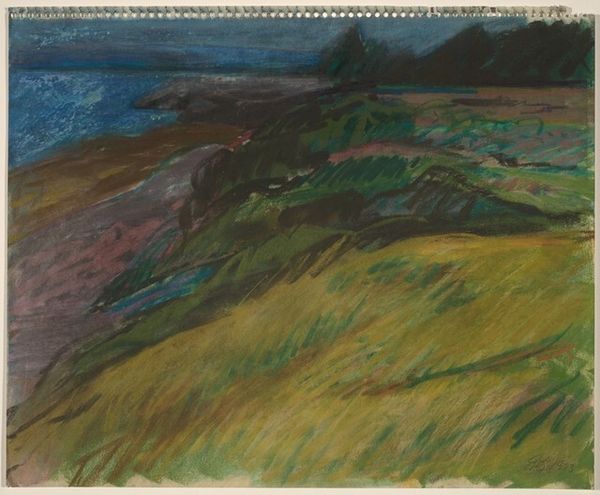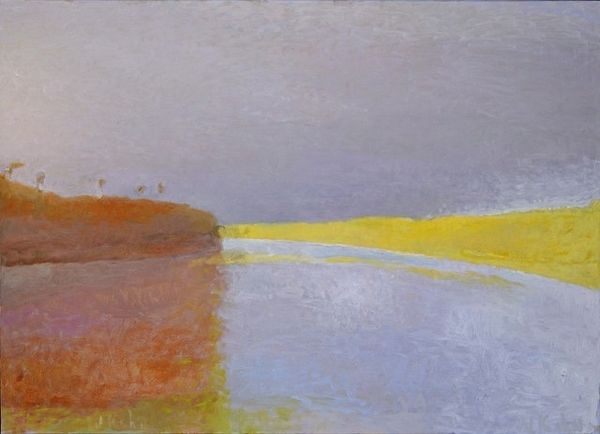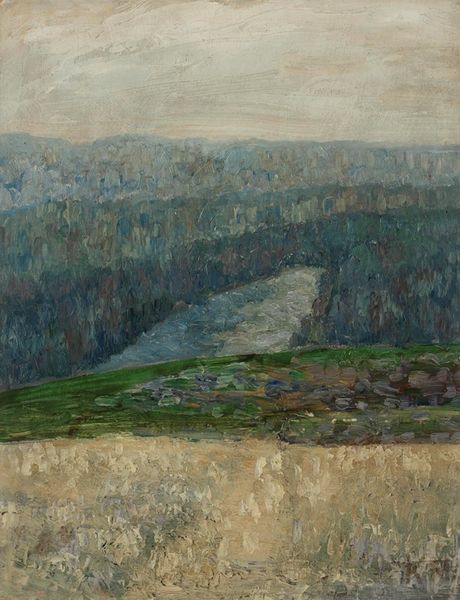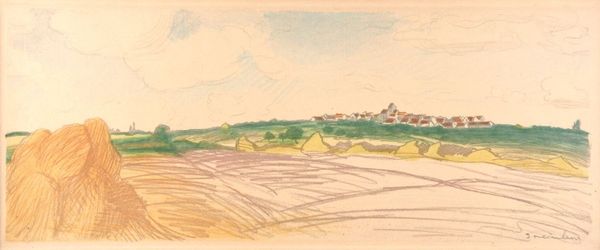
drawing, plein-air, pastel
#
drawing
#
impressionism
#
plein-air
#
landscape
#
pastel
#
watercolor
Copyright: Public domain
Curator: This is "Country Road", a pastel drawing rendered by Théophile Alexandre Steinlen. It's interesting to observe its open air quality. Editor: The texture is striking. The pastel feels dry, almost chalky, giving the scene a slightly muted and subdued atmosphere. The way the road is rendered implies a tangible journey. Curator: Indeed. Given Steinlen’s broader artistic practice often addressed social inequities, this quiet landscape takes on added weight. The unpaved road speaks volumes, not only about the journey depicted, but also access to different ways of life, in turn creating inequalities along lines of gender, race and class, and other social delineations. Editor: I agree, and considering the likely context of production for this type of landscape, perhaps there is an intentional dialogue between the means of labor involved in building infrastructure like a road, and who it ultimately benefits in society. The materiality of the pastel, being so raw and directly applied, further enhances that conversation around work, and the economic system. Curator: The historical context is important, absolutely, as many art critics would examine his work to question who is on that road, and what would it have represented. Steinlen was not just depicting a picturesque route, but a space ripe with implications of movement, privilege, and potentially exclusion. The horizon line too, appears hazy. What meaning does that have, and can we see any intentional symbolism, by design or accident? Editor: Well, the haziness evokes both a physical, environmental condition – perhaps the end of a long day under the sun or dust rising – but it could be suggesting, more fundamentally, an unclear horizon of opportunity or even production? Curator: Steinlen asks us to look critically at not just what the image depicts, but also how landscape reflects deeper social tensions and inequities of that time, while resonating even today. Editor: The very act of making and depicting that road is connected to the labour, and the lack of infrastructure might be linked to wider dynamics of production and power. An intersection of process, and context which leads to powerful conversation. Curator: It serves as a potent reminder that art does not exist in a vacuum, but in a constant feedback loop between creation, perception, and action, prompting questions rather than settling for easy answers. Editor: Precisely, and it prompts further inquiries into Steinlen's other work as well.
Comments
No comments
Be the first to comment and join the conversation on the ultimate creative platform.
